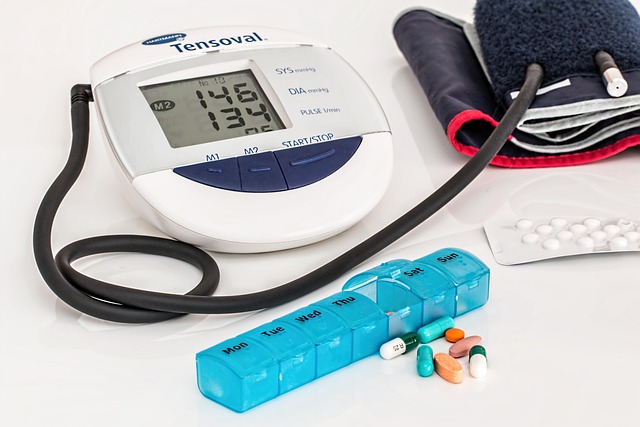Erectile Dysfunction Treatment Options: Complete Guide
Erectile dysfunction (ED) affects millions and can harm relationships and well-being at any age. This comprehensive guide explains lifestyle strategies, medical options, costs, and warning signs to help you understand available ED treatments—from exercise and quitting smoking to medications, devices, injections, and surgery—so you can make informed decisions with your healthcare provider.

Lifestyle and Natural Strategies
Many men experience noticeable improvements in erectile function by addressing lifestyle factors that affect circulation, hormonal balance, and nerve health. Regular aerobic exercise supports cardiovascular fitness, which is key to achieving and sustaining erections. Strengthening the pelvic floor through targeted exercises can also enhance rigidity and control.
Weight management is important: excess body fat is associated with decreased testosterone and increased vascular inflammation, both of which can worsen ED. Smoking harms blood vessels and impairs circulation; stopping tobacco use often leads to better sexual performance. Alcohol in moderation may not be harmful, but excessive drinking can interfere with erectile function, so reducing intake helps. Stress, anxiety, and poor sleep are common contributors—managing mental health through counseling, relaxation techniques, or mindfulness can yield meaningful benefits.
These noninvasive measures are low-risk and often recommended as first-line strategies, either alone or alongside medical treatments.
Medical and Procedural Treatments
When lifestyle changes are insufficient, clinicians offer several medical options tailored to individual needs and underlying causes.
-
Oral medications: Phosphodiesterase type 5 (PDE5) inhibitors such as sildenafil and tadalafil are commonly prescribed. They increase blood flow to the penis and are effective for many men, but they require sexual stimulation to work and can interact with certain heart medications.
-
Vacuum erection devices: These mechanical pumps create an erection by drawing blood into the penis; a constriction ring is applied at the base to maintain hardness. They are noninvasive and suitable for men who cannot take oral drugs.
-
Penile injections and urethral suppositories: Medications injected directly into the corpus cavernosum or delivered into the urethra can produce rapid erections by relaxing penile smooth muscle and increasing blood inflow. These approaches may cause discomfort, bruising, or priapism in rare cases and require training from a healthcare provider.
-
Surgical implants: For men with refractory ED who do not respond to conservative therapies, penile prostheses (inflatable or malleable) provide a permanent mechanical solution. Implants carry surgical risks such as infection and device malfunction, but satisfaction rates are generally high when performed by experienced surgeons.
Each option has unique benefits and potential adverse effects. A clinician will assess cardiovascular health, medications, hormonal status, and patient preferences when recommending treatments.
Costs and Insurance Considerations
Costs vary widely based on the treatment, location, and whether insurance provides coverage. Below is a general overview to give a sense of typical expenses, but local prices and policy details will affect actual out-of-pocket costs.
| Treatment Option | Average Cost Range | Insurance Coverage |
|---|---|---|
| Oral Medications | $10–70 per pill | Often partially covered |
| Vacuum Devices | $200–500 one-time | Sometimes covered |
| Penile Injections | $20–80 per dose | Usually covered |
| Penile Implants | $20,000–50,000 | May be covered if medically necessary |
Prices, rates, or cost estimates mentioned here are approximate and may change over time; independent research and confirmation with insurers or providers are recommended before making financial decisions.
Insurance plans differ: some cover prescription therapies or injections, while devices or surgeries may require prior authorization or demonstration of medical necessity. Discuss billing, coverage, and alternative options with your provider and insurer to avoid unexpected expenses.
Health Considerations and Risk Factors
Erectile dysfunction can be a symptom of broader medical issues. Cardiovascular disease, diabetes, high blood pressure, high cholesterol, and hormonal imbalances are strongly linked to ED. Because penile blood flow is sensitive to systemic vascular health, ED may precede other cardiovascular events and can serve as an early warning sign.
Medications for other conditions (e.g., certain antidepressants, blood pressure drugs) can also contribute to erectile problems. A thorough medical evaluation—including history, physical exam, and targeted lab testing—helps identify reversible causes and guides safe treatment selection.
Open communication with a healthcare professional is essential: they can screen for underlying disease, adjust interacting medications, and recommend appropriate interventions. Lifestyle changes combined with targeted medical therapy often produce the best outcomes.
When to Seek Help and Personalizing Treatment
If erectile difficulties are persistent, distressing, or accompanied by other symptoms (chest pain, sudden loss of vision, or severe mood changes), seek prompt medical attention. Treatment should be individualized: what works for one person may not suit another due to differing health profiles, goals, and tolerances for side effects.
A stepwise approach—beginning with lifestyle modification and moving to medications, devices, or procedures as needed—allows for tailored care while minimizing risk. Couples counseling can be valuable when ED affects relationships or self-esteem.
Final Thoughts
Erectile dysfunction is common and treatable. Combining healthy habits with appropriate medical therapies can restore sexual function for many men and improve overall well-being. Because ED can signal more serious health problems, a comprehensive evaluation is important. Discuss options with a qualified healthcare provider to design a plan that considers your health, preferences, and long-term goals.
This article is for informational purposes only and should not be considered medical advice. Please consult a qualified healthcare professional for personalized guidance and treatment.






